|
|
|
|
|
Oil On
Canvas, Real Flavor of Old Masters
|
|

|
ARTWORKS
INDEX
A B C D E F G H I J K L M N O P Q R S T U V W X Y Z |
ARTISTS
INDEX
A B C D E F G H I J K L M N O P Q R S T U V W X Y Z |
|
|
| | |
|
|
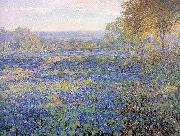 |
Onderdonk, Julian -- Click Here
|
|
American, 1882-1922
was a Texan Impressionist painter, often called "the father of Texas painting." He attended West Texas Military Academy and was graduated in 1900. Julian Onderdonk was born in San Antonio, TX to Robert Jenkins Onderdonk (a painter) and Emily Gould Onderdonk. He was raised in South Texas and was an enthusiastic sketcher and painter. At 19, with the help of a generous neighbor, Julian left Texas in order to study with the renowned American Impressionist William Merritt Chase. Julian's father, Robert, has also once studied with Chase. Julian spent the summer of 1901 on Long Island at Chase's Shinnecock School of Art. He studied with Chases for a couple of years and then moved to New York to attempt to make a living as an eu plain aire artist. While in New York he met and married Gertrude Shipman and they soon had a son. |
|
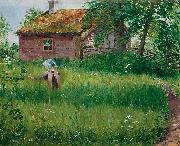 |
Olof Sager-Nelson -- Click Here
|
|
painted Flicka pa blomsterang in 1889 |
|
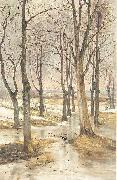 |
Olof Hermelin -- Click Here
|
|
Sweden (1827 -1913 ) - Painter
painted Varlandskap med skata in 1899 |
|
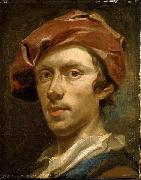 |
Olof Arenius -- Click Here
|
|
a Swedish portrait painter, and son of a minister in Upland, was born in 1701. He studied under David von Krafft, and afterwards went to the Netherlands to study the old masters. His portraits and miniatures in oil are much esteemed, and are to be found in all the public galleries, as well as in the best private collections, in Sweden. Many of them have been engraved. He died at Stockholm in 1766.
|
|
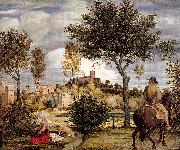 |
Olivier, Woldemar Friedrich -- Click Here
|
|
German, 1791-1859
.Painter and draughtsman, brother of Heinrich Olivier and Ferdinand Olivier. He first studied in Dessau under the court sculptor Friedemann Hunold (1773-1840), a pupil of Johann Gottfried Schadow, before teaching himself to paint. Following the return of his brothers from Paris, he toured the Harz with Ferdinand in 1810 and in 1811 moved with him, via Dresden, to Vienna. There he drew nudes and antiquities at the Akademie der Bildenden Kenste. In 1813-14 he participated in the uprising against Napoleonic occupation in the Letzow volunteer corps, along with his friends from Vienna, Theodor Kerner, Joseph von Eichendorff and Philipp Veit. After Kerner fell at Gadebusch (26 August 1813), Friedrich sketched him on his deathbed (Dessau, Anhalt Gemeldegal.). |
|
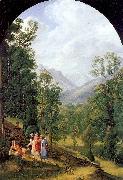 |
Olivier, Johann Heinrich Ferdinand -- Click Here
|
|
German, 1785-1841 |
|
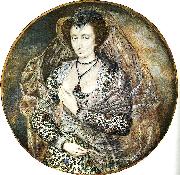 |
Oliver, Issac -- Click Here
|
|
English, approx. 1556-1617 |
|
|
|
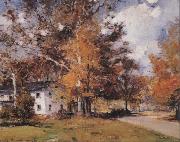 |
Oliver Dennett Grover -- Click Here
|
|
American, 1861-1927 |
|
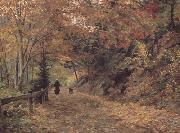 |
Olga Wisinger-Florian -- Click Here
|
|
Austria
born 1844 - died 1926
was an Austrian impressionist painter, mainly of landscapes and flower still lifes. She was a notable representative of Austrian Mood Impressionism. Having trained as a concert pianist, Wisinger-Florian switched to painting in the mid-1870s. She was a student of Melchior Fritsch, August Schaeffer, and Emil Jakob Schindler. From 1881 she regularly showed paintings at the annual exhibitions mounted at the artist's house and later often showed at Vienna Secession exhibitions. Work she showed at the Paris and Chicago international exhibitions earned her worldwide acclaim. The artist, who was also active in the middle-class women's movements of the time, was awarded numerous distinctions and prizes. Wisinger-Florian's early paintings can be assigned to what is known as Austrian Mood Impressionism. In her landscape paintings she adopted Schindler's sublime approach to nature. The motifs she employed, such as views of tree-lined avenues, gardens and fields, were strongly reminiscent of her teacher's work. After breaking with Schindler in 1884, however, the artist went her own way. Her conception of landscape became more realistic. |
|
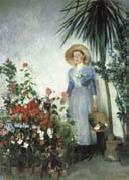 |
Olga Boznanska -- Click Here
|
|
Krakow 1865-1940 Paris,Polish painter. She took drawing lessons at home from the age of nine and began regular studies in 1883 under the portrait painter Kazimierz Pochwalski (1855-1940). She continued her training in 1884-5 at the Adam Baraniecki School of Art, the only school in Krakew accessible to women at that time. She went to Munich for further study, working in the studio of Carl Kricheldorf (b 1863) in 1886-7, and in that of Wilhelm Derr (1857-1900) in 1888. In 1889 she participated in the Internationale Kunstausstellung in Munich and opened her own studio, which over the next decade became a meeting-place for students. In 1895 she ran a private school of painting founded by Professor Theodor Humml (1864-1939). |
|
|
|
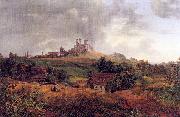 |
Oehme, Ernst Ferdinand -- Click Here
|
|
German, 1797-1855 |
|
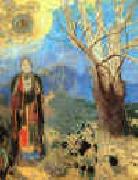 |
Odilon Redon -- Click Here
|
|
French Symbolist Painter, 1840-1916
Bertrand-Jean Redon, better known as Odilon Redon (April 20, 1840 ?C July 6, 1916) was a Symbolist painter and printmaker, born in Bordeaux, Aquitaine, France. Odilon was a nickname derived from his mother, Odile.
Redon started drawing as a young child, and at the age of 10 he was awarded a drawing prize at school. At age 15, he began formal study in drawing but on the insistence of his father he switched to architecture. His failure to pass the entrance exams at Paris?? Ecole des Beaux-Arts ended any plans for a career as an architect, although he would later study there under Jean-L??on Gerôme.
Back home in his native Bordeaux, he took up sculpture, and Rodolphe Bresdin instructed him in etching and lithography. However, his artistic career was interrupted in 1870 when he joined the army to serve in the Franco-Prussian War.
At the end of the war, he moved to Paris, working almost exclusively in charcoal and lithography. It would not be until 1878 that his work gained any recognition with Guardian Spirit of the Waters, and he published his first album of lithographs, titled Dans le R??ve, in 1879. Still, Redon remained relatively unknown until the appearance in 1884 of a cult novel by Joris-Karl Huysmans titled, À rebours (Against Nature). The story featured a decadent aristocrat who collected Redon's drawings.
In the 1890s, he began to use pastel and oils, which dominated his works for the rest of his life. In 1899, he exhibited with the Nabis at Durand-Ruel's. In 1903 he was awarded the Legion of Honor. His popularity increased when a catalogue of etchings and lithographs was published by Andr?? Mellerio in 1913 and that same year, he was given the largest single representation at the New York Armory Show. In 1923 Mellerio published: Odilon Redon: Peintre Dessinateur et Graveur. An archive of Mellerio's papers is held by the Ryerson & Burnham Libraries at the Art Institute of Chicago.
In 2005 the Museum of Modern Art launched an exhibition entitled "Beyond The Visible", a comprehensive overview of Redon's work showcasing more than 100 paintings, drawings, prints and books from The Ian Woodner Family Collection. The exhibition ran from October 30, 2005 to January 23, 2006. |
|
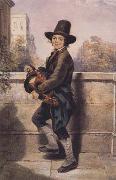 |
Octavius Oakley -- Click Here
|
|
1800-1867
was a Victorian watercolourist. Oakley initially worked for a cloth manufacturer near Leeds in Yorkshire. He developed into a specialist of portraits in watercolour and enjoyed the patronage of the Duke of Devonshire. From living in Derby where he depicted rustic scenes, he moved to Leamington Spa in Warwickshire in 1836, but returned to London in the 1840s and worked there until his death, producing paintings of street scenes and gypsies and their lifestyle. His emphasis on gypsy paintings which he exhibited at the Royal Watercolour Society earned him the name 'Gypsy Oakley'. Oakley met Thomas Baker in Leamington Spa where Baker was living and working and in 1841 |
|
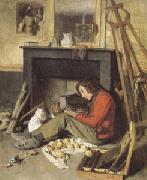 |
Octave Tassaert -- Click Here
|
|
Paris 1800-1874
was a French painter of portraits and genre, religious, historical and allegorical paintings, as well as a lithographer and engraver, though this family was of Flemish origin. He was the grandson of the sculptor Jean-Pierre-Antoine Tassaert. Octave's first artistic training came from his father Jean-Joseph-François Tassaert (1765-c. 1835) and his older brother Paul (?-1855), before he was apprenticed to the engraver Alexis-François Girard (1787-1870). Next he studied at the École des Beaux-Arts (1817-25) from 1817 through 1825, under Guillaume Guillon-Lethi??re, but never won the school's Prix de Rome. Winning popular but not critical success, his works showing poor people's lives were felt melodramatic by critics but acclaimed by the public. His submission to the 1855 World Exhibition was well received by the critics, but Octave ceased to exhibit after the 1857 Salon, withdrawing more and more from the formal art world. Collectors of his works included Alfred Bruyas and Alexandre Dumas, fils, but in 1863 Octave stopped painting altogether and tried to become a poet (though none of his works are extant), |
|
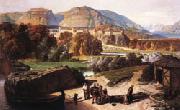 |
Octave Penguilly - L Haridon -- Click Here
|
|
Paris 1811 - Paris 1870.
French Painter. |
|
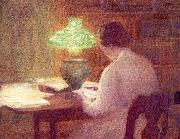 |
Ochtman, Mina Fonda -- Click Here
|
|
American, 1862-1924
was the wife of the American painter Leonard Ochtman and a notable American Impressionist in her own right. She was a part of the Cos Cob Art Colony and lived in Greenwich, Connecticut. Their daughter, Dorothy Ochtman Del Mar, was also a painter of note. |
|
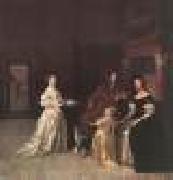 |
OCHTERVELT, Jacob -- Click Here
|
|
Dutch Baroque Era Painter, 1634-1682
Dutch painter. According to Houbraken, he and Pieter de Hooch were fellow students of the Dutch Italianate Nicolaes Berchem in Haarlem, probably between 1646, when Berchem returned from Italy, and 1655, when Ochtervelt married Dirkje Meesters in the Dutch Reformed Church in Rotterdam. Ochtervelt's earliest known works reveal the influences of a number of Dutch Italianate painters. Landscapes with figures, such as Hunters and Shepherds in a Landscape (1652; Karl-Marx-Stadt, St?dt. Kstsamml.), owe much to Berchem in subject and composition. They may also have been partly inspired by similar landscapes by Jan Baptist Weenix and Ludolf de Jongh. Towards the mid-1650s Ochtervelt began painting garden scenes |
|
 |
Muhammadi of Herat -- Click Here
|
|
the period of 1465-1535
|
|
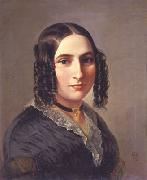 |
Moritz Daniel Oppenheim -- Click Here
|
|
(January 7, 1800, Hanau, Germany - February 26, 1882, Frankfurt am Main) was a German painter who is often regarded as the first Jewish painter of the modern era. His work was informed by his cultural and religious roots at a time when many of his German Jewish contemporaries chose to convert. Oppenheim is considered by the scholar Ismar Schorsch to be in sympathy with the ideals of the Wissenschaft des Judentums movement, because he remained "fair to the present" without denying his past.
Oppenheim was born to Orthodox Jewish parents at Hanau, Germany in 1800; he died at Frankfurt am Main in 1882. His niece was the wife of student and fellow painter Benjamin Prins, Rosa Benari.
He received his first lessons in painting from Westermayer, in Hanau, and entered the Munich Academy of Arts at the age of seventeen. Later he visited Paris, where Jean-Baptiste Regnault became his teacher, and then went to Rome, where he studied with Bertel Thorwaldsen, Barthold Georg Niebuhr, and Friedrich Overbeck. There he studied the life of the Jewish ghetto and made sketches of the various phases of its domestic and religious life, in preparation for several large canvases which he painted upon his return to Germany. In 1825 he settled at Frankfurt, and shortly after exhibited his painting David Playing Before Saul, to see which a great number of admirers from all parts of Europe visited his studio. In 1832, at the instance of Goethe, Charles Frederick, Grand Duke of Saxe-Weimar-Eisenach conferred upon him the honorary title of professor.
|
|
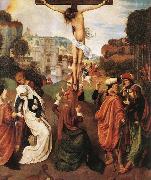 |
Master of Virgo inter Virgines -- Click Here
|
|
Netherlandish Painter,
active 1470-1520 |
|
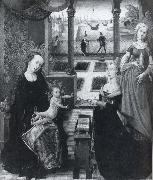 |
Master of the View of Sainte Gudule -- Click Here
|
|
Netherlandish Northern Renaissance Painter, active ca.1485 |
|
 |
Master of the Vienna Lamentation -- Click Here
|
|
painted Left wing of an altarpiece with the Circumcision and the Virgin of an Annunciation in c. 1515-1525
|
|
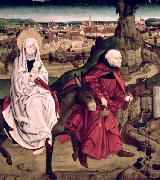 |
Master of the Schotten Altarpiece -- Click Here
|
|
was a German painter, active in Nuremberg during the 14th and 15th centuries. His name is derived from an altarpiece dated to about 1390, which once stood in the church of St. Mary in Schotten. The altarpiece was dismantled in 1828.
|
|
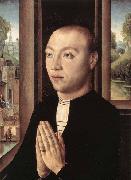 |
Master of the Saint Ursula Legend -- Click Here
|
|
Flemish Northern Renaissance Painter, active 1475-1500 |
|
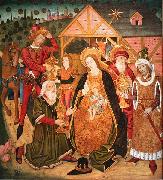 |
Master of the Prelate Mur -- Click Here
|
|
painted The Adoration of the Magi in 15th century
|
|
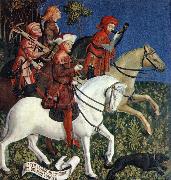 |
MASTER of the Polling Panels -- Click Here
|
|
German Northern Renaissance Painter, active 1434-1450 |
|
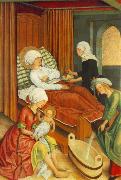 |
MASTER of the Pfullendorf Altar -- Click Here
|
|
German Northern Renaissance Painter, 15th Century |
|
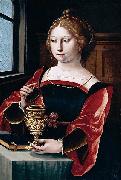 |
Master Of The Parrot -- Click Here
|
|
painted Mary Magdalen in between 1525(1525) and 1550(1550)
|
|
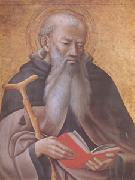 |
Master of the observanza Triptych -- Click Here
|
|
active in Siena after 1425 |
|
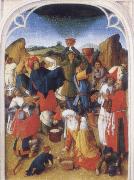 |
Master of the Manna -- Click Here
|
|
French Early Renaissance,
15th Century |
|
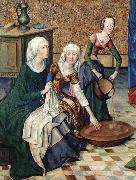 |
MASTER of the Life of the Virgin -- Click Here
|
|
German Northern Renaissance Painter, active 1460-1480 |
|
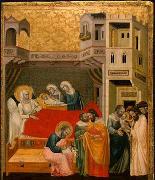 |
Master of the Life of Saint John the Baptist -- Click Here
|
|
Italian Byzantine Style Painter, 14th Century |
|
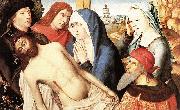 |
Master of the Legend of St. Lucy -- Click Here
|
|
(fl. 1480-1510) was an unidentified Early Netherlandish painter who worked in Bruges, now a city in Belgium. His name comes from for an altarpiece in the church of Saint James in Bruges, which is dated 1480 and depicts three scenes from the life of Saint Lucy. Since then, twenty-five to thirty-five paintings have been attributed to the same hand. He may have trained Spanish students at his studio in Bruges. Many of them are characterized by views of the city of Bruges in the background, and can be dated according to the level of construction of its belfry. He may have trained with Dieric Bouts, and was certainly influenced by Bruges' greatest artist at the time, Hans Memling.
|
|
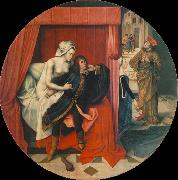 |
Master of the Joseph Legend -- Click Here
|
|
Flemish Northern Renaissance Painter, active ca.1500 |
|
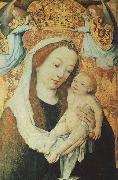 |
Master of the Housebook -- Click Here
|
|
German Northern Renaissance Painter, 15th Century, German graphic artist. The master is named for a series of vigorous and sophisticated drawings of everyday life found in the Hausbuch at Castle Wolfegg. Many of his engravings are in the Rijksmuseum, Amsterdam. His work is thought to have influenced Bosch, Bruegel, and Durer. |
|
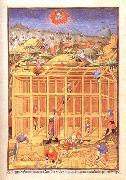 |
MASTER of the Duke of Bedford -- Click Here
|
|
French Early Renaissance Miniaturist, active 1405-1435 |
|
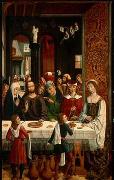 |
MASTER of the Catholic Kings -- Click Here
|
|
Spanish painter
active 1485-1500 in Castilia |
|
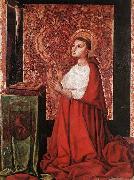 |
MASTER of the Avignon School -- Click Here
|
|
French Early Renaissance Painter, 15th Century |
|
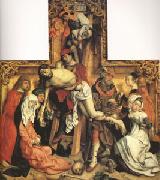 |
master of st bartholomew -- Click Here
|
|
active in Cologne ca 1480/1510 |
|
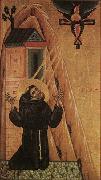 |
MASTER of San Francesco Bardi -- Click Here
|
|
active 1240-1270 in Florence |
|
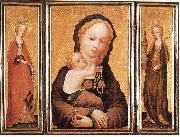 |
MASTER of Saint Veronica -- Click Here
|
|
German Gothic Era Painter, active ca.1395-1420 |
|
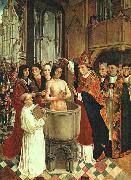 |
MASTER of Saint Gilles -- Click Here
|
|
French Painter, active ca.1500 |
|
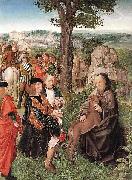 |
Master of Saint Giles -- Click Here
|
|
The Master of Saint Giles (French: Maître de Saint-Gilles) was a Franco-Flemish painter active, probably in Paris, about 1500, working in a delicate Late Gothic manner, with rendering of textures and light and faithful depictions of actual interiors that show his affinities with Netherlandish painting. It is not clear whether the Master of Saint Giles was a French painter who trained in the Low Countries (perhaps more likely), or a Netherlander who emigrated to France.
His pseudonym was given him by Max Friedländer, who reconstructed part of the anonymous painter's oeuvre, starting from two panels devoted to Saint Giles (a Miracle and a Mass) in the National Gallery, London, that were part of the lefthand shutter of an altarpiece, and two further panels now in Washington from the same altarpiece. The hand of an assistant can be discerned in the Baptism of Clovis at the National Gallery of Art, Washington, who also have a panel with Episodes from the Life of a Bishop-Saint - perhaps Saint Leu, Saint Denis or Saint Remy. All four panels have, or had, single grisaille figures of saints (Saints Peter, Giles, Denis and an unidentified bishop-saint) in niches, imitating sculpture, on the reverse. The Washington pair, which were in poor condition, have been separated and are lost, although photographs exist. Undoubtedly there were further panels, whose subjects cannot be guessed, as the combination of scenes is original. |
|
 |
MASTER of Saint Cecilia -- Click Here
|
|
Italian Byzantine Style Painter, active 1300-1320 |
|
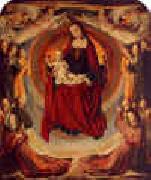 |
Master of Moulins -- Click Here
|
|
French
1480-1500 Master of Moulins Gallery
Until the late 20th century, the name of the painter of the Moulins Triptych was unknown, although art historians identified a number of other works that were evidently by the same hand. The first monograph on the Master of Moulins, written in 1961 by Madeleine Huillet d'Istria, argued that this artist did not actually exist, and that more than 12 different artists were responsible for the corpus of works traditionally ascribed to him. The Master's identity was established after an inscription was found on the reverse of a damaged painting, Christ with Crown of Thorns (1494) in the Royal Museums of Fine Arts of Belgium, Brussels, identifying the artist as Jean Hey, teutonicus and pictor egregius ("the famous painter"), and identifying the patron as Jean Cueillette, who was secretary to the King and an associate of the Bourbon family. Stylistic similarities link this painting to the works attributed to the Master of Moulins. The Master of Moulins appears to have been the court painter for the Bourbons, and from a surviving account for 1502-03, it is clear that the court painter's name was Jean; other candidates once considered plausible, such as Jean Perr??al and Jean Prevost, have proven untenable in the light of subsequent research. The term "Teutonicus", or "German" included Flemings at this date. |
|
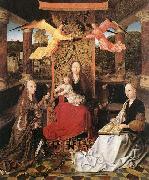 |
Master of Hoogstraeten -- Click Here
|
|
Flemish Northern Renaissance Painter, active ca.1490-1530 |
|
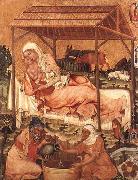 |
MASTER of Hohenfurth -- Click Here
|
|
Bohemian painter
active 1350-70 in Prague
|
|
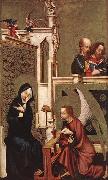 |
MASTER of Heiligenkreuz -- Click Here
|
|
Austrian Northern Renaissance Painter, 15th Century,was an Austrian painter active at the beginning of the fifteenth century; a tentative lifespan of 1395 to 1430 has been put forth, but this appears highly conjectural. His name is taken from a diptych that once belonged to the Cistercian Abbey of Heiligenkreuz, located in southeastern Austria near the present-day border with Hungary. The left panel depicts the Annunciation on the obverse; the reverse is a depiction of the Madonna and Child. The right panel depicts the Mystical Marriage of Saint Catherine, with Saint Dorothy on its reverse. Details of costume and iconography combine with associations with the International Style to indicate a date of around the first decade of the fifteenth century.
It was initially proposed, by Betty Kurth in 1922, that the artist was French and had some association with the court in Paris. Other writers have disagreed, and various nationalities including French, Austrian, German, or Bohemian have been posited for the Master. Some have further suggested that he was an itinerant court artist, trained in France but active in Austria. Various clues have been used in an attempt to describe his nationality. These include his use of finely-worked gold decoration, in which some have seen a link to Franco-Burgundian goldsmith's work of the late fourteenth century. Others, instead, see it as a link to the school of panel painting then active at the court in Prague. Consequently, it seems highly unlikely that the artist's nationality will be conclusively established.
|
|
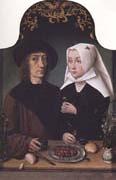 |
Master of Frankfurt -- Click Here
|
|
Flemish Northern Renaissance Painter, 1460-ca.1533.South Netherlandish painter. He takes his name from two paintings commissioned by patrons from Frankfurt am Main. His chief importance lies in his continuing the great tradition of 15th-century Netherlandish painting (particularly the compositions of Rogier van der Weyden and Hugo van der Goes) well into the 16th century, his development of a markedly earthy figure type, his apparently innovative management of a large workshop that 'mass-produced' paintings for the open market and his status |
|
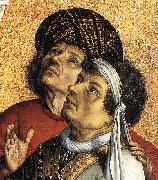 |
Master Of Flemalle -- Click Here
|
|
Robert Campin (c. 1375 - 26 April 1444), now usually identified as the artist known as the Master of Flemalle, is usually considered the first great master of Flemish and Early Netherlandish painting. This had been a matter of controversy for decades; Campin's life is relatively well documented for the period, but no works in assessable condition could be securely connected with him, whilst a corpus of work had been attached to the unidentified "Master of Flemalle", named after the supposed origin of a work.
Campin seems to have had relatives in Valenciennes. He first appears as settled in Tournai from the archives of 1405-6, as a free master of the guild of painters, and he bought citizenship in 1410, which suggests he was not born there. He eventually attained the office of dean of the guild, and wardenship of a church and other civic offices, and was running a large workshop. By 1432, however, he lost his civic positions because of scandals, and probably his role in political disturbances in the city. In 1429 he was found guilty of withholding evidence, and sentenced to go on a pilgrimage, and in 1432 was convicted of adultery and banished for a year. Margaret of Burgundy, wife of the Count of Holland and sister of John the Fearless, Duke of Burgundy intervened on his behalf, and this was reduced to a fine. The dated Werl Altarpiece (1438) shows he continued to work (the two outer wings are in the Prado; the main panel is lost). |
|
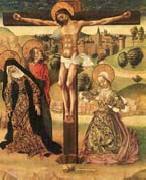 |
MASTER of Budapest -- Click Here
|
|
Spanish painter
active c. 1500 in Castile |
|
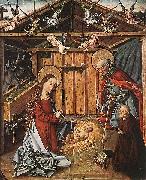 |
Master of Avila -- Click Here
|
|
15 Master of Avila Nativity 1474-76 Oil on wood Museo Lezaro Galdiano, Madrid This is the finest work of the master, it forms part of a triptych as the central panel. The left panel was the Annunciation to the Shepherds while the right panel represented the Annunciation to the Magi. The composition follows the example of Gallego's paintings and the use of the cool colors |
|
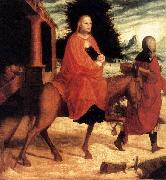 |
Master of Ab Monogram -- Click Here
|
|
MASTER of AB Monogram. German painter (active 1530s in Saxony |
|
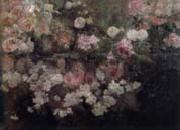 |
Maria Oakey Dewing -- Click Here
|
|
American Painter, 1845-1927 |
|
|
|
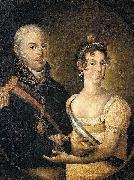 |
Manuel Dias de Oliveira -- Click Here
|
|
(1764 - 1837) |
|
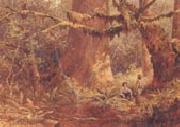 |
Lucius O Brien -- Click Here
|
|
Canadian Painter, 1832-1899 |
|
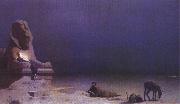 |
Luc - Olivier Merson -- Click Here
|
|
French, 1846 - 1920 |
|
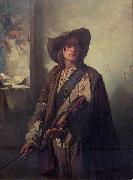 |
Louis Gallait -- Click Here
|
|
(9 or 10 May 1810 - 20 November 1887) was a Belgian painter. His d his reputation especially with the large painting of Charles V's abdication. Gallait's works were considered as the basis for a desirable renewal of historical paintings because of the realism, costume faithfulness and colorful posture of his paintings. His last artwork was sent on tour in Germany and that led to new signals even among German historians. He was also a distinguished portrait painter.
Gallait died in Brussels in 1887. There is a painting by Louis Gallait at the Norton Art Museum in West Palm Beach, Florida ("Art and Liberty").
|
|
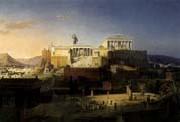 |
Leo von Klenze -- Click Here
|
|
German Architect and Painter, 1784-1864,was a German neoclassicist architect, painter and writer. Court architect of Bavarian King Ludwig I, Leo von Klenze was one of the most prominent representatives of Greek revival style. Von Klenze studied architecture in Berlin and Paris. Between 1808 and 1813 he was a court architect of Jerome Bonaparte, King of Westphalia. Later he moved to Bavaria and in 1816 began to work as court architect of Ludwig I. The King's passion for Hellenism shaped the architectural style of von Klenze. He built many neoclassical buildings in Munich, including the Ruhmeshalle and Monopteros temple. On Konigsplatz he designed probably the best known modern Hellenistic architectural ensemble. Near Regensburg he built the Walhalla temple, named after Valhalla, the home of gods in Norse mythology. When Greece won its independence, Ludwig I's son Otto became the country's first king. Von Klenze was invited to Athens to submit plans of city reconstruction in the style of Ancient Greece. Russian Emperor Nicholas I commissioned von Klenze to design a building for the New Hermitage, a public museum that housed Greek, Roman, and Egyptian antiquities. Von Klenze also designed and arranged museum galleries in Munich, including the Glyptothek and Alte Pinakothek. Von Klenze was not only an architect, but also an accomplished painter and draughtsman. In many of his paintings ancient buildings were depicted. Those served as models for his own architectural projects. Klenze studied ancient architecture during his travels to Italy and Greece. He also participated in excavations of ancient buildings in Athens and submitted projects for the restoration of the Acropolis. Klenze collected works of important contemporary German painters. He sold his collection, including 58 landscapes and genre paintings, to King Ludwig I in 1841. |
|
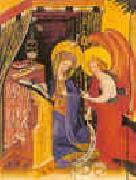 |
Konrad of Soest -- Click Here
|
|
1370-1422
German Konrad Gallery |
|
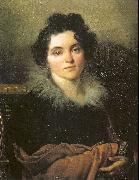 |
Kiprensky, Orest -- Click Here
|
|
Russian Painter, 1782-1836
Russian painter and draughtsman. The leading Russian portrait painter of the Romantic period, he was the illegitimate son of the landowner A. D'yakonov and was adopted by his serf, Adam Shval'b and granted his freedom at birth. His surname is unconnected with that of either his real or his adoptive father, and its origin is uncertain. In 1798 he was sent to the St Petersburg Academy of Arts, eventually studying history painting under Gabriel-Francois Doyen and Grigory Ugryumov. In 1805 he received an important gold medal for his painting Dmitry Donskoy on the Field of Kulikovo (St Petersburg, Rus. Mus.) and won the right to travel to Italy on a scholarship. He did not, however, do so immediately, because of the tense political situation in Europe. Kiprensky's history painting was in keeping with the patriotic mood of Russian society during the years of the war against Napoleon. |
|
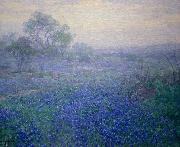 |
Julian Onderdonk -- Click Here
|
|
(July 30, 1882 - October 27, 1922) was a Texan Impressionist painter, often called "the father of Texas painting."
Julian Onderdonk was born in San Antonio, Texas, to Robert Jenkins Onderdonk, a painter, and Emily Gould Onderdonk. He was raised in South Texas and was an enthusiastic sketcher and painter. As a teenager Onderdonk was influenced and received some training from the prominent Texas artist Verner Moore White who also lived in San Antonio at the time. He attended the West Texas Military Academy, graduating in 1900.
At 19, with the help of a generous neighbor, Julian left Texas in order to study with the renowned American Impressionist William Merritt Chase. Julian's father, Robert, has also once studied with Chase. Julian spent the summer of 1901 on Long Island at Chase's Shinnecock School of Art. He studied with Chase for a couple of years and then moved to New York City to attempt to make a living as an en plein air artist. While in New York he met and married Gertrude Shipman and they soon had a son.
Onderdonk returned to San Antonio in 1909, where he produced his best work. His most popular subjects were bluebonnet landscapes. Onderdonk died on October 27, 1922 in San Antonio.
President George W. Bush decorated the Oval Office with three of Onderdonk's paintings. The Dallas Museum of Art has several rooms dedicated exclusively to Onderdonk's work.
|
|
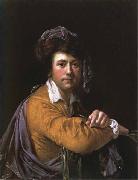 |
Joseph wright of derby -- Click Here
|
|
1734-97
English painter. He painted portraits, landscapes and subjects from literature, but his most original and enduringly celebrated works are a few which reflect the philosophical and technological preoccupations of the later 18th century and are characterized by striking effects of artificial light. He was the first major English painter to work outside the capital all his life: apart from spells in Liverpool (1768-71), Italy (1773-5) and Bath (1775-7), he lived and worked in his native Derby, though exhibiting in London at both the Society of Artists (1765-76, 1791) and the Royal Academy (1778-82, 1789-90, 1794). |
|
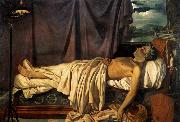 |
Joseph Denis Odevaere -- Click Here
|
|
1778-1830,Flemish painter. He attended evening classes at the Bruges Academie in 1794-5 and then went to Paris, where he entered the studio of the Bruges artist Joseph-Benoet Suvee. In 1801 he began training under Jacques-Louis David and in 1804 won the Prix de Rome for his Death of Phocion (Paris, Ecole N. Sup. B.-A.), in which he faithfully adhered to the principles of David's teaching. Before going to Italy he spent a year in Bruges carrying out portrait commissions, including the Marquis de Chauvelin (1805; Bruges, Groeningemus.). During his time in Rome (1805-12) he copied antique and Renaissance works, taking a particular interest in Raphael, who features in his wash drawing the Master of Urbino Introduced by Bramante to Julius II (1807; Bruges, Groeningemus.), a study for a lost painting. Around 1811 he was among the artists chosen to decorate the Palazzo del Quirinale for Napoleon's visit, although he never executed more than a sketch, Tanaquil Predicting the Future Greatness of Servius Tullius (c. 1811-12; Dijon, Mus. Magnin). Odevaere successfully exhibited in Paris in 1812 and then moved to Ghent, showing works at the Salon there two years later. After the union of the Low Countries in 1815 he became official painter to William I. As a result of this post he executed several works illustrating the history of the Dutch royal family, including the Prince of Orange Wounded at Waterloo (1817) and the Battle of Nieuwpoort (1820; both Brussels, Pal. Nation, on dep. Brussels, Pal. Justice). In 1815 he was commissioned to recover works of art taken from the Low Countries by the French. David's arrival in Brussels in 1816 coincided with the beginning of Odevaere's most ambitious composition, the Departure of the Athenians for Salamis (1816-25; Brussels, Mus. A. Anc.), inspired as much by Jean-Auguste-Dominique Ingres as by David, although the latter frequently advised Odevaere on the painting. From 1825 to 1829 he worked on a series of paintings conveying his support of the philhellenic committees created during the Greek War of Independence. |
|
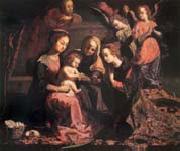 |
Josefa of Ayala -- Click Here
|
|
1630-1684,Portuguese painter and engraver. She was the daughter of the Portuguese painter Baltazar Gomes Figueira (1597-1674) and a Spanish lady, Doea Catarina de Ayala y Cabrera. After the restoration of the Portuguese monarchy in 1640 the family moved to Coimbra. Here Josefa began her apprenticeship under her father, a painter of landscapes, still-lifes and religious works, who in 1644 painted the retable of Nossa Senhora da Graea, Coimbra, in the naturalist-tenebrist style he had learnt in Seville in the circles of Juan del Castillo, |
|
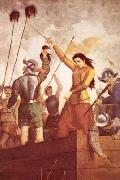 |
Jose Mercedes Ortega -- Click Here
|
|
painted Dona Ines de Suarez in defending the city of Santiago in 1897 |
|
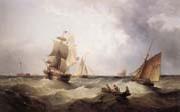 |
John ward of hull -- Click Here
|
|
British, 1798-1849 |
|
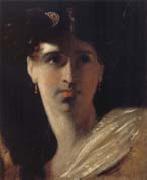 |
John Opie -- Click Here
|
|
English Painter, 1761-1807,English painter. He was born in a tin-mining district, where his father was a mine carpenter. He had a natural talent for drawing and was taken up by an itinerant doctor, John Wolcot (the poet Peter Pindar, 1738-1819), who was an amateur artist and had a number of well-connected friends. Wolcot taught Opie the rudiments of drawing and painting, providing engravings for him to copy and gaining him access to country-house collections. Opie's early portraits, such as Dolly Pentreath (1777; St Michael's Mount, Cornwall, Lord St Levan priv. col.), are the work of a competent provincial painter and owe much to his study of engravings after portraits by Rembrandt. His attempts at chiaroscuro and impasto in Rembrandt's manner gave his pictures a maturity that clearly startled contemporary audiences expecting to see works by an untutored artist. Thus in 1780, when a picture by him was exhibited in London at the Society of Artists with the description 'a Boy's Head, an Instance of Genius, not having ever seen a picture', Opie was hailed as 'the Cornish Wonder'. When he himself arrived in London, where he was promoted by Wolcot and his paintings were exhibited at the Royal Academy in 1781 and 1782, he was seen as a phenomenon, impressing even Joshua Reynolds, who is reputed to have remarked that Opie was 'like Caravaggio and Velasquez in one'. |
|
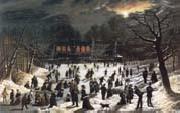 |
John O Brien Inman -- Click Here
|
|
American, 1828-1896 |
|
 |
Johannes Adam Oertel -- Click Here
|
|
German, 1823-1909 |
|
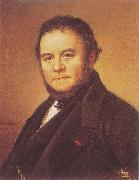 |
Johan Olaf Sodermark -- Click Here
|
|
painted Henri Beyle in 1840
|
|
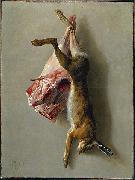 |
Jean-Baptiste Oudry -- Click Here
|
|
(17 March 1686 - 30 April 1755) was a French Rococo painter, engraver, and tapestry designer. He is particularly well known for his naturalistic pictures of animals and his hunt pieces depicting game.
Jean-Baptiste Oudry was born in Paris, the son of Jacques Oudry, a painter and art dealer, and of his wife Nicole Papillon, who belonged to the family of the engraver Jean-Baptiste-Michel Papillon.
His father was a director of the Academie de St-Luc art school, which Oudry joined. At first, Oudry concentrated on portraiture, and he became a pupil and perhaps a collaborator of Nicolas de Largilliere from 1707 to 1712. He graduated at only 22 years of age, on 21 May 1708, at the same time as his two older brothers. The next year, he married Marie-Marguerite Froisse,[1] the daughter of a miroitier (a mirror-maker) to whom he gave lessons in painting.
Oudry became an assistant professor at Academie de Saint-Luc in 1714, and professor on 1 July 1717. He was inducted as a member of the prestigious Academie Royale de Peinture et de Sculpture in 1719, and was engaged as a professor there in 1743.
After producing mainly portraits, Oudry started to produce still life paintings of fruits or animals, aa well as paintings of religious subjects, such as the Nativity, Saint Giles, and the Adoration of the Magi.
|
|
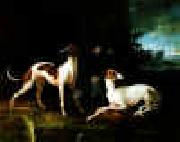 |
Jean Baptiste Oudry -- Click Here
|
|
French Baroque Era Painter, 1686-1755
French painter. He was the principal animal painter and one of the foremost decorative painters during the first half of Louis XVs reign. After initial training as a portrait painter, he concentrated on still-lifes; by the 1720s he had also begun to establish himself as a specialist in hunting scenes, game-pieces and portraits of animals. He ran an active workshop, often keeping his best originals for years and selling copies and (more or less autograph) variants. In the 1730s he was most active as a tapestry designer, making numerous designs for the royal tapestry works of Beauvais and the Gobelins, and he continued to produce his brilliantly painted hunts, still-lifes and studies of animals and birds to the end of his career. |
|
|
|
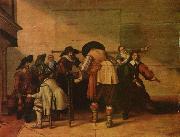 |
Jan Olis -- Click Here
|
|
painted Frohliche Gesellschaft in 1644 |
|
|
|
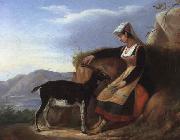 |
Jacques-Francois Ochard -- Click Here
|
|
was a French artist, remembered as the first art teacher of Claude Monet at his high school.
Ochard had been a student of Jacques-Louis David (1748-1825), and lived in Normandy, to where Monet's family had moved in 1845. Ochard's method of instruction was the traditional one of drawing from plaster casts of the human figure.
|
|
|
|
|
| | |
|
|
|
|